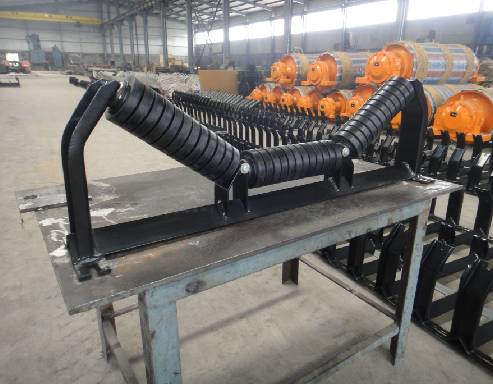 Afrikaans
Afrikaans  Albanian
Albanian  Amharic
Amharic  Arabic
Arabic  Armenian
Armenian  Azerbaijani
Azerbaijani  Basque
Basque  Belarusian
Belarusian  Bengali
Bengali  Bosnian
Bosnian  Bulgarian
Bulgarian  Catalan
Catalan  Cebuano
Cebuano  Corsican
Corsican  Croatian
Croatian  Czech
Czech  Danish
Danish  Dutch
Dutch  English
English  Esperanto
Esperanto  Estonian
Estonian  Finnish
Finnish  French
French  Frisian
Frisian  Galician
Galician  Georgian
Georgian  German
German  Greek
Greek  Gujarati
Gujarati  Haitian Creole
Haitian Creole  hausa
hausa  hawaiian
hawaiian  Hebrew
Hebrew  Hindi
Hindi  Miao
Miao  Hungarian
Hungarian  Icelandic
Icelandic  igbo
igbo  Indonesian
Indonesian  irish
irish  Italian
Italian  Japanese
Japanese  Javanese
Javanese  Kannada
Kannada  kazakh
kazakh  Khmer
Khmer  Rwandese
Rwandese  Korean
Korean  Kurdish
Kurdish  Kyrgyz
Kyrgyz  Lao
Lao  Latin
Latin  Latvian
Latvian  Lithuanian
Lithuanian  Luxembourgish
Luxembourgish  Macedonian
Macedonian  Malgashi
Malgashi  Malay
Malay  Malayalam
Malayalam  Maltese
Maltese  Maori
Maori  Marathi
Marathi  Mongolian
Mongolian  Myanmar
Myanmar  Nepali
Nepali  Norwegian
Norwegian  Norwegian
Norwegian  Occitan
Occitan  Pashto
Pashto  Persian
Persian  Polish
Polish  Portuguese
Portuguese  Punjabi
Punjabi  Romanian
Romanian  Russian
Russian  Samoan
Samoan  Scottish Gaelic
Scottish Gaelic  Serbian
Serbian  Sesotho
Sesotho  Shona
Shona  Sindhi
Sindhi  Sinhala
Sinhala  Slovak
Slovak  Slovenian
Slovenian  Somali
Somali  Spanish
Spanish  Sundanese
Sundanese  Swahili
Swahili  Swedish
Swedish  Tagalog
Tagalog  Tajik
Tajik  Tamil
Tamil  Tatar
Tatar  Telugu
Telugu  Thai
Thai  Turkish
Turkish  Turkmen
Turkmen  Ukrainian
Ukrainian  Urdu
Urdu  Uighur
Uighur  Uzbek
Uzbek  Vietnamese
Vietnamese  Welsh
Welsh  Bantu
Bantu  Yiddish
Yiddish  Yoruba
Yoruba  Zulu
Zulu Optimizing Efficiency with Belt Conveyor Idlers for Material Handling Systems
Understanding Belt Conveyor Idlers An Essential Component of Material Handling
Belt conveyors are a critical part of modern material handling systems, used widely across various industries such as mining, manufacturing, and logistics. One of the most crucial components of a belt conveyor system is the idler. Understanding belt conveyor idlers is essential for optimizing conveyor performance, ensuring safety, and maximizing efficiency in material transportation.
What are Belt Conveyor Idlers?
Belt conveyor idlers are cylindrical rollers that support the conveyor belt as it moves. Positioned at intervals along the belt’s length, these rollers provide a surface for the belt to rest on, preventing sagging and ensuring smooth movement. Idlers play a vital role in reducing friction between the belt and the supporting structure, which helps in minimizing wear and tear on the belt. They also assist in aligning the belt and maintaining load stability, making them indispensable in any conveyor system.
Types of Idlers
There are several types of belt conveyor idlers, each designed for specific applications and operational conditions
1. Carrying Idlers These idlers support the load while the conveyor is in operation. They are typically arranged in a series along the length of the conveyor.
2. Return Idlers Located on the return side of the conveyor, these idlers guide the belt back to the loading point. They ensure that the belt is properly aligned and that it maintains its shape during the return journey.
4. Training Idlers These specialized idlers are used to correct the tracking of the belt. They help ensure that the belt runs straight and true, which is essential for the efficient operation of the conveyor.
belt conveyor idlers

Importance of Idler Design
The design of idlers significantly impacts the performance and longevity of a belt conveyor system. Factors such as roller diameter, material, and bearing type can influence how well the idler functions. For instance, larger diameter rollers can help reduce friction and improve the overall efficiency of the conveyor. Additionally, using durable materials and high-quality bearings can enhance the life span of the idler, leading to lower maintenance costs and reduced downtime.
Maintenance Considerations
Regular maintenance of belt conveyor idlers is crucial for preventing breakdowns and ensuring optimal performance. Common maintenance tasks include
- Inspection for Wear and Damage Regular checks for signs of wear on idlers can prevent unexpected failures. Damaged rollers should be replaced promptly to avoid further cost implications.
- Lubrication Proper lubrication of bearings is essential to reduce friction and heat, prolonging the life of the idlers.
- Alignment Checks Regular alignment checks can ensure that idlers are functioning properly, preventing issues with belt tracking and reducing the risk of belt damage.
Conclusion
In conclusion, belt conveyor idlers are fundamental components that contribute to the efficient operation of conveyor systems. By understanding their types, importance, and maintenance requirements, businesses can optimize their material handling processes. Investing in high-quality idlers and maintaining them properly not only enhances conveyor performance but also contributes to overall operational efficiency. As industries continue to evolve, the role of idlers in supporting efficient and safe material handling remains more vital than ever.
-
Revolutionizing Conveyor Reliability with Advanced Rubber Lagging PulleysNewsJul.22,2025
-
Powering Precision and Durability with Expert Manufacturers of Conveyor ComponentsNewsJul.22,2025
-
Optimizing Conveyor Systems with Advanced Conveyor AccessoriesNewsJul.22,2025
-
Maximize Conveyor Efficiency with Quality Conveyor Idler PulleysNewsJul.22,2025
-
Future-Proof Your Conveyor System with High-Performance Polyurethane RollerNewsJul.22,2025
-
Driving Efficiency Forward with Quality Idlers and RollersNewsJul.22,2025





























